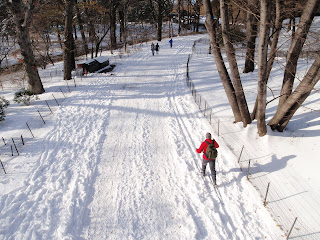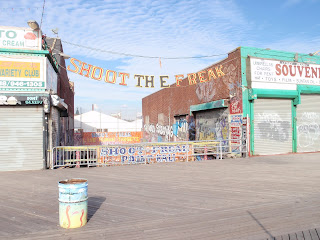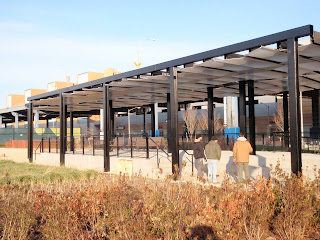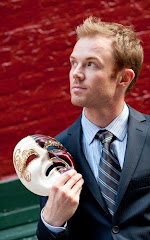Museums, once thought to be the triumphs of a City's in need of rejuvenation, have spawned a new era of iconic architecture; the perceived panacea that promises to resolve a dwindling civic patronage. To me, no one person stands more iconic in this 'galleria-revolution' than Frank Gehry. Driven not by the arts community, the proliferation of such cultural buildings have "[become] the way in which cities articulate their identity and vitality". To some the "Bilbao Effect" is no longer the solution for ailing cities but for corporations - a way to lure tourists and economic development - but a potential boon to corporations, whose identities are signified in their contribution to a city's architectural map of 'trophy buildings'.
(Bilbao Guggenheim, Spain)
Exquisitely inventive and materially ground-breaking, a great deal of the architecture that steals headlines and stimulates the salivary glands of architectural students worldwide loses sight of its obligation to a cities social and environmental impacts. While "sensuous, almost feminine facades" are appealing in their own right and offer a refreshing complement to the orthogonal domination of our cities' urban faces, merely intending these new structures to spur surrounding development in areas is simply rhetoric. Too often, these buildings offer little to the public realm. Opaque or barely transparent glazing, oppressively 'thin' concrete walls, and undulating floor-to-roof facades not only lack the formative qualities of public space at their edges, but almost arrogantly turn their back on the surrounding life it seeks to attract.
(IAC Headquarters, NYC)
(Experience Music Project, Seattle)
Am I the only one to find it strange that in seeking pictures for the 'Walt Disney Concert Hall' there appears an absence of people? Traditional notions of the Agora may have long since passed. However, the attraction of and migration to cities only promises to increase a demand for livability, community, and interaction. 'Build it and they will come' may work in the short term but often results in isolated pockets of urban space that, over time, dissociate themselves from the surrounding fabric they seek to weave. Is thoughtful contribution to our public environment too heavy a demand for our policy makers to make of developers and designers in addition to simply providing recognizable jewels that enhance the skyline?
(Seattle Public Library, Seattle)
Architecture and public open-space design have long-since offered innovation in human comfort, passive and active recreational programming, social engagement, and city building. This is evidenced in the illustrations of designer's concepts religiously. Unfortunately the key ingredient that is so often illustrated - one that supports and nourishes these places and spaces - is so often lacking in the photographed realities of such creations - people!













































